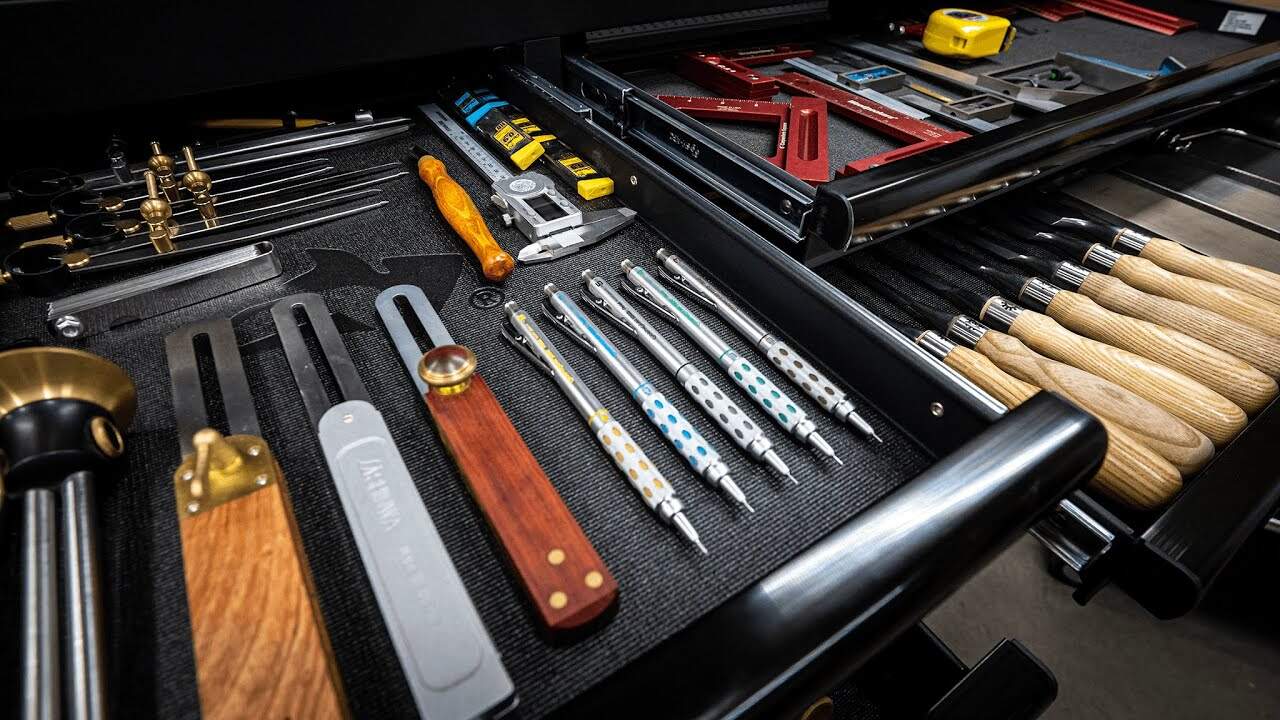Jodee from Inspire Woodcraft shared the woodworking tips featured in this video.
Jodee walks through a shop overhaul focused on dust protection, compact storage, and making frequently used tools easy to reach by consolidating gear into two rolling tool chests.
Watch the full video and subscribe to Inspire Woodcraft:
Why Jodee Reorganized the Shop
The main driver for the reorganization was dust and clutter—open storage and flat surfaces were collecting sawdust and turning into catch-alls for random items.
Consolidating tools into enclosed, mobile chests reduces dust on sensitive equipment and forces deliberate homes for common items, which improves workflow and reduces time spent looking for things.
Choosing the Right Chests
Jodee contrasts a heavy-duty, tall chest with a lower, wood-topped chest to balance capacity and workbench-height access in the shop.
The larger chest provides a covered workspace, built-in power for charging batteries, and a magnetic back panel, while the smaller chest serves as a mobile work surface and storage for portable machines.
How Jodee Organized the Drawers
Shallow drawers near the top are dedicated to layout and measuring tools so squares, rules, pencils, and gauges stay flat and visible for quick access.
Mid-depth drawers house hand tools, chisels, and planes with room for custom dividers later, and deep drawers store less-frequent power tools like finish nailers, saws, and jigs in one compact place.
Built-in Features That Matter
Built-in power strips and a lift-top with gas struts keep batteries and chargers dust-free and ready, which eliminates trips back into the house to retrieve charged cells.
A magnetic back panel and magnetic strips allow bits and common metal tools to be stored vertically, using otherwise wasted space and keeping items secure when the lid closes.
Protecting Sensitive Gear
One drawer functions as a small workstation and also hides a padded compartment for camera gear, gimbals, and electronics so delicate items are shielded from shop dust.
Keeping sensitive items behind a lid reduces the risk of dust-related maintenance and extends the life of gear that otherwise would sit on open benches.
Sanders, Consumables, and Small Parts
The wood-topped chest stores sanders at the front for quick deployment, while various drawers and small containers keep sheets, discs, and abrasive types organized by grit and format.
Small organizers and repurposed kitchen dividers help separate screws, fasteners, and oddball hardware so replenishing and finding parts becomes faster and less error-prone.
Workflow Improvements and Lessons
Centralizing frequently used tools at waist height reduces bending and reaching, which streamlines common tasks and keeps the main bench clear for active projects.
Jodee emphasizes that not every drawer needs to be perfectly planned on day one—starting with a sensible layout and improving it with partitions or trays over time works well.
How to Adapt This Approach
Woodworkers can adapt the strategy by selecting one covered, lockable chest for dusty or sensitive items and a second mobile chest as a local work surface for machines and consumables.
Prioritize shallow drawers for layout tools and measuring devices, reserve mid-depth drawers for hand tools with divider options, and use deep drawers for bulky power tools or infrequent items.
Final Plans and Next Steps
Jodee plans to remove the existing French cleat wall, remake a narrower paint cabinet, and build dedicated clamp storage to further declutter the shop.
As the reorganization continues, the emphasis remains on reducing dust, tailoring storage to workflow, and keeping common tools immediately available while protecting gear that needs it.
Support Jodee by visiting his online store here: https://inspirewoodcraft.com/collections/all.
